-
EXECUTIVE SUMMARY
-
Market Overview
-
Key Findings
-
Market Segmentation
-
Competitive Landscape
-
Challenges and Opportunities
-
Future Outlook
-
MARKET INTRODUCTION
-
Definition
-
Scope of the study
- Research Objective
- Assumption
- Limitations
-
RESEARCH METHODOLOGY
-
Overview
-
Data Mining
-
Secondary Research
-
Primary Research
- Primary Interviews and Information Gathering Process
- Breakdown of Primary Respondents
-
Forecasting Model
-
Market Size Estimation
- Bottom-Up Approach
- Top-Down Approach
-
Data Triangulation
-
Validation
-
MARKET DYNAMICS
-
Overview
-
Drivers
-
Restraints
-
Opportunities
-
MARKET FACTOR ANALYSIS
-
Value chain Analysis
-
Porter's Five Forces Analysis
- Bargaining Power of Suppliers
- Bargaining Power of Buyers
- Threat of New Entrants
- Threat of Substitutes
- Intensity of Rivalry
-
COVID-19 Impact Analysis
- Market Impact Analysis
- Regional Impact
- Opportunity and Threat Analysis
-
PRECIPITATED SILICA MARKET, BY PROCESS (USD BILLION)
-
Dry Process
-
Wet Process
-
Pyrogenic (Fumed) Process
-
PRECIPITATED SILICA MARKET, BY SOURCE (USD BILLION)
-
Natural Sources
-
Synthetic Source
-
Recycled Sources
-
Byproduct Sources
-
Specialty Sources
-
PRECIPITATED SILICA MARKET, BY GRADE (USD BILLION)
-
Standard Grade
-
High Purity Grade
-
Ultrafine Grade
-
Food Grade
-
Industrial Grade
-
PRECIPITATED SILICA MARKET, BY APPLICATION (USD BILLION)
-
Additives
-
Free Flow Agents
-
Adsorbents
-
Catalysts
-
Others
-
PRECIPITATED SILICA MARKET, BY END-USE (USD BILLION)
-
Automotive
-
Electronics
-
Construction
-
Agriculture
-
Rubber and Plastics
-
Food and Beverage
-
Healthcare and Pharmaceuticals
-
Others
-
PRECIPITATED SILICA MARKET, BY REGIONAL (USD BILLION)
-
North America
- US
- Canada
-
Europe
- Germany
- UK
- France
- Russia
- Italy
- Spain
- Rest of Europe
-
APAC
- China
- India
- Japan
- South Korea
- Malaysia
- Thailand
- Indonesia
- Rest of APAC
-
South America
- Brazil
- Mexico
- Argentina
- Rest of South America
-
MEA
- GCC Countries
- South Africa
- Rest of MEA
-
COMPETITIVE LANDSCAPE
-
Overview
-
Competitive Analysis
-
Market share Analysis
-
Major Growth Strategy in the Precipitated Silica Market
-
Competitive Benchmarking
-
Leading Players in Terms of Number of Developments in the Precipitated Silica Market
-
Key developments and growth strategies
- New Product Launch/Service Deployment
- Merger & Acquisitions
- Joint Ventures
-
Major Players Financial Matrix
- Sales and Operating Income
- Major Players R&D Expenditure. 2023
-
COMPANY PROFILES
-
Hubei Update Science and Technology
- Financial Overview
- Products Offered
- Key Developments
- SWOT Analysis
- Key Strategies
-
Huanggang Yinfeng Silicon
- Financial Overview
- Products Offered
- Key Developments
- SWOT Analysis
- Key Strategies
-
Fujian Zhangzhou Guanghua Technology
- Financial Overview
- Products Offered
- Key Developments
- SWOT Analysis
- Key Strategies
-
Cabot Corporation
- Financial Overview
- Products Offered
- Key Developments
- SWOT Analysis
- Key Strategies
-
Intercontinental Technology
- Financial Overview
- Products Offered
- Key Developments
- SWOT Analysis
- Key Strategies
-
Nisso Shoji
- Financial Overview
- Products Offered
- Key Developments
- SWOT Analysis
- Key Strategies
-
Wacker Chemie
- Financial Overview
- Products Offered
- Key Developments
- SWOT Analysis
- Key Strategies
-
Madhu Silica
- Financial Overview
- Products Offered
- Key Developments
- SWOT Analysis
- Key Strategies
-
PPG Industries
- Financial Overview
- Products Offered
- Key Developments
- SWOT Analysis
- Key Strategies
-
Evonik Industries
- Financial Overview
- Products Offered
- Key Developments
- SWOT Analysis
- Key Strategies
-
Fioretto
- Financial Overview
- Products Offered
- Key Developments
- SWOT Analysis
- Key Strategies
-
Siye Chemical
- Financial Overview
- Products Offered
- Key Developments
- SWOT Analysis
- Key Strategies
-
Orica
- Financial Overview
- Products Offered
- Key Developments
- SWOT Analysis
- Key Strategies
-
Solvay
- Financial Overview
- Products Offered
- Key Developments
- SWOT Analysis
- Key Strategies
-
APPENDIX
-
References
-
Related Reports
-
LIST OF TABLES
-
\r\n
-
LIST OF ASSUMPTIONS
-
NORTH AMERICA PRECIPITATED SILICA MARKET SIZE ESTIMATES & FORECAST, BY PROCESS, 2019-2035 (USD BILLIONS)
-
NORTH AMERICA PRECIPITATED SILICA MARKET SIZE ESTIMATES & FORECAST, BY SOURCE, 2019-2035 (USD BILLIONS)
-
NORTH AMERICA PRECIPITATED SILICA MARKET SIZE ESTIMATES & FORECAST, BY GRADE, 2019-2035 (USD BILLIONS)
-
NORTH AMERICA PRECIPITATED SILICA MARKET SIZE ESTIMATES & FORECAST, BY APPLICATION, 2019-2035 (USD BILLIONS)
-
NORTH AMERICA PRECIPITATED SILICA MARKET SIZE ESTIMATES & FORECAST, BY END-USE, 2019-2035 (USD BILLIONS)
-
NORTH AMERICA PRECIPITATED SILICA MARKET SIZE ESTIMATES & FORECAST, BY REGIONAL, 2019-2035 (USD BILLIONS)
-
US PRECIPITATED SILICA MARKET SIZE ESTIMATES & FORECAST, BY PROCESS, 2019-2035 (USD BILLIONS)
-
US PRECIPITATED SILICA MARKET SIZE ESTIMATES & FORECAST, BY SOURCE, 2019-2035 (USD BILLIONS)
-
US PRECIPITATED SILICA MARKET SIZE ESTIMATES & FORECAST, BY GRADE, 2019-2035 (USD BILLIONS)
-
US PRECIPITATED SILICA MARKET SIZE ESTIMATES & FORECAST, BY APPLICATION, 2019-2035 (USD BILLIONS)
-
US PRECIPITATED SILICA MARKET SIZE ESTIMATES & FORECAST, BY END-USE, 2019-2035 (USD BILLIONS)
-
US PRECIPITATED SILICA MARKET SIZE ESTIMATES & FORECAST, BY REGIONAL, 2019-2035 (USD BILLIONS)
-
CANADA PRECIPITATED SILICA MARKET SIZE ESTIMATES & FORECAST, BY PROCESS, 2019-2035 (USD BILLIONS)
-
CANADA PRECIPITATED SILICA MARKET SIZE ESTIMATES & FORECAST, BY SOURCE, 2019-2035 (USD BILLIONS)
-
CANADA PRECIPITATED SILICA MARKET SIZE ESTIMATES & FORECAST, BY GRADE, 2019-2035 (USD BILLIONS)
-
CANADA PRECIPITATED SILICA MARKET SIZE ESTIMATES & FORECAST, BY APPLICATION, 2019-2035 (USD BILLIONS)
-
CANADA PRECIPITATED SILICA MARKET SIZE ESTIMATES & FORECAST, BY END-USE, 2019-2035 (USD BILLIONS)
-
CANADA PRECIPITATED SILICA MARKET SIZE ESTIMATES & FORECAST, BY REGIONAL, 2019-2035 (USD BILLIONS)
-
EUROPE PRECIPITATED SILICA MARKET SIZE ESTIMATES & FORECAST, BY PROCESS, 2019-2035 (USD BILLIONS)
-
EUROPE PRECIPITATED SILICA MARKET SIZE ESTIMATES & FORECAST, BY SOURCE, 2019-2035 (USD BILLIONS)
-
EUROPE PRECIPITATED SILICA MARKET SIZE ESTIMATES & FORECAST, BY GRADE, 2019-2035 (USD BILLIONS)
-
EUROPE PRECIPITATED SILICA MARKET SIZE ESTIMATES & FORECAST, BY APPLICATION, 2019-2035 (USD BILLIONS)
-
EUROPE PRECIPITATED SILICA MARKET SIZE ESTIMATES & FORECAST, BY END-USE, 2019-2035 (USD BILLIONS)
-
EUROPE PRECIPITATED SILICA MARKET SIZE ESTIMATES & FORECAST, BY REGIONAL, 2019-2035 (USD BILLIONS)
-
GERMANY PRECIPITATED SILICA MARKET SIZE ESTIMATES & FORECAST, BY PROCESS, 2019-2035 (USD BILLIONS)
-
GERMANY PRECIPITATED SILICA MARKET SIZE ESTIMATES & FORECAST, BY SOURCE, 2019-2035 (USD BILLIONS)
-
GERMANY PRECIPITATED SILICA MARKET SIZE ESTIMATES & FORECAST, BY GRADE, 2019-2035 (USD BILLIONS)
-
GERMANY PRECIPITATED SILICA MARKET SIZE ESTIMATES & FORECAST, BY APPLICATION, 2019-2035 (USD BILLIONS)
-
GERMANY PRECIPITATED SILICA MARKET SIZE ESTIMATES & FORECAST, BY END-USE, 2019-2035 (USD BILLIONS)
-
GERMANY PRECIPITATED SILICA MARKET SIZE ESTIMATES & FORECAST, BY REGIONAL, 2019-2035 (USD BILLIONS)
-
UK PRECIPITATED SILICA MARKET SIZE ESTIMATES & FORECAST, BY PROCESS, 2019-2035 (USD BILLIONS)
-
UK PRECIPITATED SILICA MARKET SIZE ESTIMATES & FORECAST, BY SOURCE, 2019-2035 (USD BILLIONS)
-
UK PRECIPITATED SILICA MARKET SIZE ESTIMATES & FORECAST, BY GRADE, 2019-2035 (USD BILLIONS)
-
UK PRECIPITATED SILICA MARKET SIZE ESTIMATES & FORECAST, BY APPLICATION, 2019-2035 (USD BILLIONS)
-
UK PRECIPITATED SILICA MARKET SIZE ESTIMATES & FORECAST, BY END-USE, 2019-2035 (USD BILLIONS)
-
UK PRECIPITATED SILICA MARKET SIZE ESTIMATES & FORECAST, BY REGIONAL, 2019-2035 (USD BILLIONS)
-
FRANCE PRECIPITATED SILICA MARKET SIZE ESTIMATES & FORECAST, BY PROCESS, 2019-2035 (USD BILLIONS)
-
FRANCE PRECIPITATED SILICA MARKET SIZE ESTIMATES & FORECAST, BY SOURCE, 2019-2035 (USD BILLIONS)
-
FRANCE PRECIPITATED SILICA MARKET SIZE ESTIMATES & FORECAST, BY GRADE, 2019-2035 (USD BILLIONS)
-
FRANCE PRECIPITATED SILICA MARKET SIZE ESTIMATES & FORECAST, BY APPLICATION, 2019-2035 (USD BILLIONS)
-
FRANCE PRECIPITATED SILICA MARKET SIZE ESTIMATES & FORECAST, BY END-USE, 2019-2035 (USD BILLIONS)
-
FRANCE PRECIPITATED SILICA MARKET SIZE ESTIMATES & FORECAST, BY REGIONAL, 2019-2035 (USD BILLIONS)
-
RUSSIA PRECIPITATED SILICA MARKET SIZE ESTIMATES & FORECAST, BY PROCESS, 2019-2035 (USD BILLIONS)
-
RUSSIA PRECIPITATED SILICA MARKET SIZE ESTIMATES & FORECAST, BY SOURCE, 2019-2035 (USD BILLIONS)
-
RUSSIA PRECIPITATED SILICA MARKET SIZE ESTIMATES & FORECAST, BY GRADE, 2019-2035 (USD BILLIONS)
-
RUSSIA PRECIPITATED SILICA MARKET SIZE ESTIMATES & FORECAST, BY APPLICATION, 2019-2035 (USD BILLIONS)
-
RUSSIA PRECIPITATED SILICA MARKET SIZE ESTIMATES & FORECAST, BY END-USE, 2019-2035 (USD BILLIONS)
-
RUSSIA PRECIPITATED SILICA MARKET SIZE ESTIMATES & FORECAST, BY REGIONAL, 2019-2035 (USD BILLIONS)
-
ITALY PRECIPITATED SILICA MARKET SIZE ESTIMATES & FORECAST, BY PROCESS, 2019-2035 (USD BILLIONS)
-
ITALY PRECIPITATED SILICA MARKET SIZE ESTIMATES & FORECAST, BY SOURCE, 2019-2035 (USD BILLIONS)
-
ITALY PRECIPITATED SILICA MARKET SIZE ESTIMATES & FORECAST, BY GRADE, 2019-2035 (USD BILLIONS)
-
ITALY PRECIPITATED SILICA MARKET SIZE ESTIMATES & FORECAST, BY APPLICATION, 2019-2035 (USD BILLIONS)
-
ITALY PRECIPITATED SILICA MARKET SIZE ESTIMATES & FORECAST, BY END-USE, 2019-2035 (USD BILLIONS)
-
ITALY PRECIPITATED SILICA MARKET SIZE ESTIMATES & FORECAST, BY REGIONAL, 2019-2035 (USD BILLIONS)
-
SPAIN PRECIPITATED SILICA MARKET SIZE ESTIMATES & FORECAST, BY PROCESS, 2019-2035 (USD BILLIONS)
-
SPAIN PRECIPITATED SILICA MARKET SIZE ESTIMATES & FORECAST, BY SOURCE, 2019-2035 (USD BILLIONS)
-
SPAIN PRECIPITATED SILICA MARKET SIZE ESTIMATES & FORECAST, BY GRADE, 2019-2035 (USD BILLIONS)
-
SPAIN PRECIPITATED SILICA MARKET SIZE ESTIMATES & FORECAST, BY APPLICATION, 2019-2035 (USD BILLIONS)
-
SPAIN PRECIPITATED SILICA MARKET SIZE ESTIMATES & FORECAST, BY END-USE, 2019-2035 (USD BILLIONS)
-
SPAIN PRECIPITATED SILICA MARKET SIZE ESTIMATES & FORECAST, BY REGIONAL, 2019-2035 (USD BILLIONS)
-
REST OF EUROPE PRECIPITATED SILICA MARKET SIZE ESTIMATES & FORECAST, BY PROCESS, 2019-2035 (USD BILLIONS)
-
REST OF EUROPE PRECIPITATED SILICA MARKET SIZE ESTIMATES & FORECAST, BY SOURCE, 2019-2035 (USD BILLIONS)
-
REST OF EUROPE PRECIPITATED SILICA MARKET SIZE ESTIMATES & FORECAST, BY GRADE, 2019-2035 (USD BILLIONS)
-
REST OF EUROPE PRECIPITATED SILICA MARKET SIZE ESTIMATES & FORECAST, BY APPLICATION, 2019-2035 (USD BILLIONS)
-
REST OF EUROPE PRECIPITATED SILICA MARKET SIZE ESTIMATES & FORECAST, BY END-USE, 2019-2035 (USD BILLIONS)
-
REST OF EUROPE PRECIPITATED SILICA MARKET SIZE ESTIMATES & FORECAST, BY REGIONAL, 2019-2035 (USD BILLIONS)
-
APAC PRECIPITATED SILICA MARKET SIZE ESTIMATES & FORECAST, BY PROCESS, 2019-2035 (USD BILLIONS)
-
APAC PRECIPITATED SILICA MARKET SIZE ESTIMATES & FORECAST, BY SOURCE, 2019-2035 (USD BILLIONS)
-
APAC PRECIPITATED SILICA MARKET SIZE ESTIMATES & FORECAST, BY GRADE, 2019-2035 (USD BILLIONS)
-
APAC PRECIPITATED SILICA MARKET SIZE ESTIMATES & FORECAST, BY APPLICATION, 2019-2035 (USD BILLIONS)
-
APAC PRECIPITATED SILICA MARKET SIZE ESTIMATES & FORECAST, BY END-USE, 2019-2035 (USD BILLIONS)
-
APAC PRECIPITATED SILICA MARKET SIZE ESTIMATES & FORECAST, BY REGIONAL, 2019-2035 (USD BILLIONS)
-
CHINA PRECIPITATED SILICA MARKET SIZE ESTIMATES & FORECAST, BY PROCESS, 2019-2035 (USD BILLIONS)
-
CHINA PRECIPITATED SILICA MARKET SIZE ESTIMATES & FORECAST, BY SOURCE, 2019-2035 (USD BILLIONS)
-
CHINA PRECIPITATED SILICA MARKET SIZE ESTIMATES & FORECAST, BY GRADE, 2019-2035 (USD BILLIONS)
-
CHINA PRECIPITATED SILICA MARKET SIZE ESTIMATES & FORECAST, BY APPLICATION, 2019-2035 (USD BILLIONS)
-
CHINA PRECIPITATED SILICA MARKET SIZE ESTIMATES & FORECAST, BY END-USE, 2019-2035 (USD BILLIONS)
-
CHINA PRECIPITATED SILICA MARKET SIZE ESTIMATES & FORECAST, BY REGIONAL, 2019-2035 (USD BILLIONS)
-
INDIA PRECIPITATED SILICA MARKET SIZE ESTIMATES & FORECAST, BY PROCESS, 2019-2035 (USD BILLIONS)
-
INDIA PRECIPITATED SILICA MARKET SIZE ESTIMATES & FORECAST, BY SOURCE, 2019-2035 (USD BILLIONS)
-
INDIA PRECIPITATED SILICA MARKET SIZE ESTIMATES & FORECAST, BY GRADE, 2019-2035 (USD BILLIONS)
-
INDIA PRECIPITATED SILICA MARKET SIZE ESTIMATES & FORECAST, BY APPLICATION, 2019-2035 (USD BILLIONS)
-
INDIA PRECIPITATED SILICA MARKET SIZE ESTIMATES & FORECAST, BY END-USE, 2019-2035 (USD BILLIONS)
-
INDIA PRECIPITATED SILICA MARKET SIZE ESTIMATES & FORECAST, BY REGIONAL, 2019-2035 (USD BILLIONS)
-
JAPAN PRECIPITATED SILICA MARKET SIZE ESTIMATES & FORECAST, BY PROCESS, 2019-2035 (USD BILLIONS)
-
JAPAN PRECIPITATED SILICA MARKET SIZE ESTIMATES & FORECAST, BY SOURCE, 2019-2035 (USD BILLIONS)
-
JAPAN PRECIPITATED SILICA MARKET SIZE ESTIMATES & FORECAST, BY GRADE, 2019-2035 (USD BILLIONS)
-
JAPAN PRECIPITATED SILICA MARKET SIZE ESTIMATES & FORECAST, BY APPLICATION, 2019-2035 (USD BILLIONS)
-
JAPAN PRECIPITATED SILICA MARKET SIZE ESTIMATES & FORECAST, BY END-USE, 2019-2035 (USD BILLIONS)
-
JAPAN PRECIPITATED SILICA MARKET SIZE ESTIMATES & FORECAST, BY REGIONAL, 2019-2035 (USD BILLIONS)
-
SOUTH KOREA PRECIPITATED SILICA MARKET SIZE ESTIMATES & FORECAST, BY PROCESS, 2019-2035 (USD BILLIONS)
-
SOUTH KOREA PRECIPITATED SILICA MARKET SIZE ESTIMATES & FORECAST, BY SOURCE, 2019-2035 (USD BILLIONS)
-
SOUTH KOREA PRECIPITATED SILICA MARKET SIZE ESTIMATES & FORECAST, BY GRADE, 2019-2035 (USD BILLIONS)
-
SOUTH KOREA PRECIPITATED SILICA MARKET SIZE ESTIMATES & FORECAST, BY APPLICATION, 2019-2035 (USD BILLIONS)
-
SOUTH KOREA PRECIPITATED SILICA MARKET SIZE ESTIMATES & FORECAST, BY END-USE, 2019-2035 (USD BILLIONS)
-
SOUTH KOREA PRECIPITATED SILICA MARKET SIZE ESTIMATES & FORECAST, BY REGIONAL, 2019-2035 (USD BILLIONS)
-
MALAYSIA PRECIPITATED SILICA MARKET SIZE ESTIMATES & FORECAST, BY PROCESS, 2019-2035 (USD BILLIONS)
-
MALAYSIA PRECIPITATED SILICA MARKET SIZE ESTIMATES & FORECAST, BY SOURCE, 2019-2035 (USD BILLIONS)
-
MALAYSIA PRECIPITATED SILICA MARKET SIZE ESTIMATES & FORECAST, BY GRADE, 2019-2035 (USD BILLIONS)
-
MALAYSIA PRECIPITATED SILICA MARKET SIZE ESTIMATES & FORECAST, BY APPLICATION, 2019-2035 (USD BILLIONS)
-
MALAYSIA PRECIPITATED SILICA MARKET SIZE ESTIMATES & FORECAST, BY END-USE, 2019-2035 (USD BILLIONS)
-
MALAYSIA PRECIPITATED SILICA MARKET SIZE ESTIMATES & FORECAST, BY REGIONAL, 2019-2035 (USD BILLIONS)
-
THAILAND PRECIPITATED SILICA MARKET SIZE ESTIMATES & FORECAST, BY PROCESS, 2019-2035 (USD BILLIONS)
-
THAILAND PRECIPITATED SILICA MARKET SIZE ESTIMATES & FORECAST, BY SOURCE, 2019-2035 (USD BILLIONS)
-
THAILAND PRECIPITATED SILICA MARKET SIZE ESTIMATES & FORECAST, BY GRADE, 2019-2035 (USD BILLIONS)
-
THAILAND PRECIPITATED SILICA MARKET SIZE ESTIMATES & FORECAST, BY APPLICATION, 2019-2035 (USD BILLIONS)
-
THAILAND PRECIPITATED SILICA MARKET SIZE ESTIMATES & FORECAST, BY END-USE, 2019-2035 (USD BILLIONS)
-
THAILAND PRECIPITATED SILICA MARKET SIZE ESTIMATES & FORECAST, BY REGIONAL, 2019-2035 (USD BILLIONS)
-
INDONESIA PRECIPITATED SILICA MARKET SIZE ESTIMATES & FORECAST, BY PROCESS, 2019-2035 (USD BILLIONS)
-
INDONESIA PRECIPITATED SILICA MARKET SIZE ESTIMATES & FORECAST, BY SOURCE, 2019-2035 (USD BILLIONS)
-
INDONESIA PRECIPITATED SILICA MARKET SIZE ESTIMATES & FORECAST, BY GRADE, 2019-2035 (USD BILLIONS)
-
INDONESIA PRECIPITATED SILICA MARKET SIZE ESTIMATES & FORECAST, BY APPLICATION, 2019-2035 (USD BILLIONS)
-
INDONESIA PRECIPITATED SILICA MARKET SIZE ESTIMATES & FORECAST, BY END-USE, 2019-2035 (USD BILLIONS)
-
INDONESIA PRECIPITATED SILICA MARKET SIZE ESTIMATES & FORECAST, BY REGIONAL, 2019-2035 (USD BILLIONS)
-
REST OF APAC PRECIPITATED SILICA MARKET SIZE ESTIMATES & FORECAST, BY PROCESS, 2019-2035 (USD BILLIONS)
-
REST OF APAC PRECIPITATED SILICA MARKET SIZE ESTIMATES & FORECAST, BY SOURCE, 2019-2035 (USD BILLIONS)
-
REST OF APAC PRECIPITATED SILICA MARKET SIZE ESTIMATES & FORECAST, BY GRADE, 2019-2035 (USD BILLIONS)
-
REST OF APAC PRECIPITATED SILICA MARKET SIZE ESTIMATES & FORECAST, BY APPLICATION, 2019-2035 (USD BILLIONS)
-
REST OF APAC PRECIPITATED SILICA MARKET SIZE ESTIMATES & FORECAST, BY END-USE, 2019-2035 (USD BILLIONS)
-
REST OF APAC PRECIPITATED SILICA MARKET SIZE ESTIMATES & FORECAST, BY REGIONAL, 2019-2035 (USD BILLIONS)
-
SOUTH AMERICA PRECIPITATED SILICA MARKET SIZE ESTIMATES & FORECAST, BY PROCESS, 2019-2035 (USD BILLIONS)
-
SOUTH AMERICA PRECIPITATED SILICA MARKET SIZE ESTIMATES & FORECAST, BY SOURCE, 2019-2035 (USD BILLIONS)
-
SOUTH AMERICA PRECIPITATED SILICA MARKET SIZE ESTIMATES & FORECAST, BY GRADE, 2019-2035 (USD BILLIONS)
-
SOUTH AMERICA PRECIPITATED SILICA MARKET SIZE ESTIMATES & FORECAST, BY APPLICATION, 2019-2035 (USD BILLIONS)
-
SOUTH AMERICA PRECIPITATED SILICA MARKET SIZE ESTIMATES & FORECAST, BY END-USE, 2019-2035 (USD BILLIONS)
-
SOUTH AMERICA PRECIPITATED SILICA MARKET SIZE ESTIMATES & FORECAST, BY REGIONAL, 2019-2035 (USD BILLIONS)
-
BRAZIL PRECIPITATED SILICA MARKET SIZE ESTIMATES & FORECAST, BY PROCESS, 2019-2035 (USD BILLIONS)
-
BRAZIL PRECIPITATED SILICA MARKET SIZE ESTIMATES & FORECAST, BY SOURCE, 2019-2035 (USD BILLIONS)
-
BRAZIL PRECIPITATED SILICA MARKET SIZE ESTIMATES & FORECAST, BY GRADE, 2019-2035 (USD BILLIONS)
-
BRAZIL PRECIPITATED SILICA MARKET SIZE ESTIMATES & FORECAST, BY APPLICATION, 2019-2035 (USD BILLIONS)
-
BRAZIL PRECIPITATED SILICA MARKET SIZE ESTIMATES & FORECAST, BY END-USE, 2019-2035 (USD BILLIONS)
-
BRAZIL PRECIPITATED SILICA MARKET SIZE ESTIMATES & FORECAST, BY REGIONAL, 2019-2035 (USD BILLIONS)
-
MEXICO PRECIPITATED SILICA MARKET SIZE ESTIMATES & FORECAST, BY PROCESS, 2019-2035 (USD BILLIONS)
-
MEXICO PRECIPITATED SILICA MARKET SIZE ESTIMATES & FORECAST, BY SOURCE, 2019-2035 (USD BILLIONS)
-
MEXICO PRECIPITATED SILICA MARKET SIZE ESTIMATES & FORECAST, BY GRADE, 2019-2035 (USD BILLIONS)
-
MEXICO PRECIPITATED SILICA MARKET SIZE ESTIMATES & FORECAST, BY APPLICATION, 2019-2035 (USD BILLIONS)
-
MEXICO PRECIPITATED SILICA MARKET SIZE ESTIMATES & FORECAST, BY END-USE, 2019-2035 (USD BILLIONS)
-
MEXICO PRECIPITATED SILICA MARKET SIZE ESTIMATES & FORECAST, BY REGIONAL, 2019-2035 (USD BILLIONS)
-
ARGENTINA PRECIPITATED SILICA MARKET SIZE ESTIMATES & FORECAST, BY PROCESS, 2019-2035 (USD BILLIONS)
-
ARGENTINA PRECIPITATED SILICA MARKET SIZE ESTIMATES & FORECAST, BY SOURCE, 2019-2035 (USD BILLIONS)
-
ARGENTINA PRECIPITATED SILICA MARKET SIZE ESTIMATES & FORECAST, BY GRADE, 2019-2035 (USD BILLIONS)
-
ARGENTINA PRECIPITATED SILICA MARKET SIZE ESTIMATES & FORECAST, BY APPLICATION, 2019-2035 (USD BILLIONS)
-
ARGENTINA PRECIPITATED SILICA MARKET SIZE ESTIMATES & FORECAST, BY END-USE, 2019-2035 (USD BILLIONS)
-
ARGENTINA PRECIPITATED SILICA MARKET SIZE ESTIMATES & FORECAST, BY REGIONAL, 2019-2035 (USD BILLIONS)
-
REST OF SOUTH AMERICA PRECIPITATED SILICA MARKET SIZE ESTIMATES & FORECAST, BY PROCESS, 2019-2035 (USD BILLIONS)
-
REST OF SOUTH AMERICA PRECIPITATED SILICA MARKET SIZE ESTIMATES & FORECAST, BY SOURCE, 2019-2035 (USD BILLIONS)
-
REST OF SOUTH AMERICA PRECIPITATED SILICA MARKET SIZE ESTIMATES & FORECAST, BY GRADE, 2019-2035 (USD BILLIONS)
-
REST OF SOUTH AMERICA PRECIPITATED SILICA MARKET SIZE ESTIMATES & FORECAST, BY APPLICATION, 2019-2035 (USD BILLIONS)
-
REST OF SOUTH AMERICA PRECIPITATED SILICA MARKET SIZE ESTIMATES & FORECAST, BY END-USE, 2019-2035 (USD BILLIONS)
-
REST OF SOUTH AMERICA PRECIPITATED SILICA MARKET SIZE ESTIMATES & FORECAST, BY REGIONAL, 2019-2035 (USD BILLIONS)
-
MEA PRECIPITATED SILICA MARKET SIZE ESTIMATES & FORECAST, BY PROCESS, 2019-2035 (USD BILLIONS)
-
MEA PRECIPITATED SILICA MARKET SIZE ESTIMATES & FORECAST, BY SOURCE, 2019-2035 (USD BILLIONS)
-
MEA PRECIPITATED SILICA MARKET SIZE ESTIMATES & FORECAST, BY GRADE, 2019-2035 (USD BILLIONS)
-
MEA PRECIPITATED SILICA MARKET SIZE ESTIMATES & FORECAST, BY APPLICATION, 2019-2035 (USD BILLIONS)
-
MEA PRECIPITATED SILICA MARKET SIZE ESTIMATES & FORECAST, BY END-USE, 2019-2035 (USD BILLIONS)
-
MEA PRECIPITATED SILICA MARKET SIZE ESTIMATES & FORECAST, BY REGIONAL, 2019-2035 (USD BILLIONS)
-
GCC COUNTRIES PRECIPITATED SILICA MARKET SIZE ESTIMATES & FORECAST, BY PROCESS, 2019-2035 (USD BILLIONS)
-
GCC COUNTRIES PRECIPITATED SILICA MARKET SIZE ESTIMATES & FORECAST, BY SOURCE, 2019-2035 (USD BILLIONS)
-
GCC COUNTRIES PRECIPITATED SILICA MARKET SIZE ESTIMATES & FORECAST, BY GRADE, 2019-2035 (USD BILLIONS)
-
GCC COUNTRIES PRECIPITATED SILICA MARKET SIZE ESTIMATES & FORECAST, BY APPLICATION, 2019-2035 (USD BILLIONS)
-
GCC COUNTRIES PRECIPITATED SILICA MARKET SIZE ESTIMATES & FORECAST, BY END-USE, 2019-2035 (USD BILLIONS)
-
GCC COUNTRIES PRECIPITATED SILICA MARKET SIZE ESTIMATES & FORECAST, BY REGIONAL, 2019-2035 (USD BILLIONS)
-
SOUTH AFRICA PRECIPITATED SILICA MARKET SIZE ESTIMATES & FORECAST, BY PROCESS, 2019-2035 (USD BILLIONS)
-
SOUTH AFRICA PRECIPITATED SILICA MARKET SIZE ESTIMATES & FORECAST, BY SOURCE, 2019-2035 (USD BILLIONS)
-
SOUTH AFRICA PRECIPITATED SILICA MARKET SIZE ESTIMATES & FORECAST, BY GRADE, 2019-2035 (USD BILLIONS)
-
SOUTH AFRICA PRECIPITATED SILICA MARKET SIZE ESTIMATES & FORECAST, BY APPLICATION, 2019-2035 (USD BILLIONS)
-
SOUTH AFRICA PRECIPITATED SILICA MARKET SIZE ESTIMATES & FORECAST, BY END-USE, 2019-2035 (USD BILLIONS)
-
SOUTH AFRICA PRECIPITATED SILICA MARKET SIZE ESTIMATES & FORECAST, BY REGIONAL, 2019-2035 (USD BILLIONS)
-
REST OF MEA PRECIPITATED SILICA MARKET SIZE ESTIMATES & FORECAST, BY PROCESS, 2019-2035 (USD BILLIONS)
-
REST OF MEA PRECIPITATED SILICA MARKET SIZE ESTIMATES & FORECAST, BY SOURCE, 2019-2035 (USD BILLIONS)
-
REST OF MEA PRECIPITATED SILICA MARKET SIZE ESTIMATES & FORECAST, BY GRADE, 2019-2035 (USD BILLIONS)
-
REST OF MEA PRECIPITATED SILICA MARKET SIZE ESTIMATES & FORECAST, BY APPLICATION, 2019-2035 (USD BILLIONS)
-
REST OF MEA PRECIPITATED SILICA MARKET SIZE ESTIMATES & FORECAST, BY END-USE, 2019-2035 (USD BILLIONS)
-
REST OF MEA PRECIPITATED SILICA MARKET SIZE ESTIMATES & FORECAST, BY REGIONAL, 2019-2035 (USD BILLIONS)
-
PRODUCT LAUNCH/PRODUCT DEVELOPMENT/APPROVAL
-
ACQUISITION/PARTNERSHIP
-
\r\n
-
LIST OF FIGURES
-
\r\n
-
MARKET SYNOPSIS
-
NORTH AMERICA PRECIPITATED SILICA MARKET ANALYSIS
-
US PRECIPITATED SILICA MARKET ANALYSIS BY PROCESS
-
US PRECIPITATED SILICA MARKET ANALYSIS BY SOURCE
-
US PRECIPITATED SILICA MARKET ANALYSIS BY GRADE
-
US PRECIPITATED SILICA MARKET ANALYSIS BY APPLICATION
-
US PRECIPITATED SILICA MARKET ANALYSIS BY END-USE
-
US PRECIPITATED SILICA MARKET ANALYSIS BY REGIONAL
-
CANADA PRECIPITATED SILICA MARKET ANALYSIS BY PROCESS
-
CANADA PRECIPITATED SILICA MARKET ANALYSIS BY SOURCE
-
CANADA PRECIPITATED SILICA MARKET ANALYSIS BY GRADE
-
CANADA PRECIPITATED SILICA MARKET ANALYSIS BY APPLICATION
-
CANADA PRECIPITATED SILICA MARKET ANALYSIS BY END-USE
-
CANADA PRECIPITATED SILICA MARKET ANALYSIS BY REGIONAL
-
EUROPE PRECIPITATED SILICA MARKET ANALYSIS
-
GERMANY PRECIPITATED SILICA MARKET ANALYSIS BY PROCESS
-
GERMANY PRECIPITATED SILICA MARKET ANALYSIS BY SOURCE
-
GERMANY PRECIPITATED SILICA MARKET ANALYSIS BY GRADE
-
GERMANY PRECIPITATED SILICA MARKET ANALYSIS BY APPLICATION
-
GERMANY PRECIPITATED SILICA MARKET ANALYSIS BY END-USE
-
GERMANY PRECIPITATED SILICA MARKET ANALYSIS BY REGIONAL
-
UK PRECIPITATED SILICA MARKET ANALYSIS BY PROCESS
-
UK PRECIPITATED SILICA MARKET ANALYSIS BY SOURCE
-
UK PRECIPITATED SILICA MARKET ANALYSIS BY GRADE
-
UK PRECIPITATED SILICA MARKET ANALYSIS BY APPLICATION
-
UK PRECIPITATED SILICA MARKET ANALYSIS BY END-USE
-
UK PRECIPITATED SILICA MARKET ANALYSIS BY REGIONAL
-
FRANCE PRECIPITATED SILICA MARKET ANALYSIS BY PROCESS
-
FRANCE PRECIPITATED SILICA MARKET ANALYSIS BY SOURCE
-
FRANCE PRECIPITATED SILICA MARKET ANALYSIS BY GRADE
-
FRANCE PRECIPITATED SILICA MARKET ANALYSIS BY APPLICATION
-
FRANCE PRECIPITATED SILICA MARKET ANALYSIS BY END-USE
-
FRANCE PRECIPITATED SILICA MARKET ANALYSIS BY REGIONAL
-
RUSSIA PRECIPITATED SILICA MARKET ANALYSIS BY PROCESS
-
RUSSIA PRECIPITATED SILICA MARKET ANALYSIS BY SOURCE
-
RUSSIA PRECIPITATED SILICA MARKET ANALYSIS BY GRADE
-
RUSSIA PRECIPITATED SILICA MARKET ANALYSIS BY APPLICATION
-
RUSSIA PRECIPITATED SILICA MARKET ANALYSIS BY END-USE
-
RUSSIA PRECIPITATED SILICA MARKET ANALYSIS BY REGIONAL
-
ITALY PRECIPITATED SILICA MARKET ANALYSIS BY PROCESS
-
ITALY PRECIPITATED SILICA MARKET ANALYSIS BY SOURCE
-
ITALY PRECIPITATED SILICA MARKET ANALYSIS BY GRADE
-
ITALY PRECIPITATED SILICA MARKET ANALYSIS BY APPLICATION
-
ITALY PRECIPITATED SILICA MARKET ANALYSIS BY END-USE
-
ITALY PRECIPITATED SILICA MARKET ANALYSIS BY REGIONAL
-
SPAIN PRECIPITATED SILICA MARKET ANALYSIS BY PROCESS
-
SPAIN PRECIPITATED SILICA MARKET ANALYSIS BY SOURCE
-
SPAIN PRECIPITATED SILICA MARKET ANALYSIS BY GRADE
-
SPAIN PRECIPITATED SILICA MARKET ANALYSIS BY APPLICATION
-
SPAIN PRECIPITATED SILICA MARKET ANALYSIS BY END-USE
-
SPAIN PRECIPITATED SILICA MARKET ANALYSIS BY REGIONAL
-
REST OF EUROPE PRECIPITATED SILICA MARKET ANALYSIS BY PROCESS
-
REST OF EUROPE PRECIPITATED SILICA MARKET ANALYSIS BY SOURCE
-
REST OF EUROPE PRECIPITATED SILICA MARKET ANALYSIS BY GRADE
-
REST OF EUROPE PRECIPITATED SILICA MARKET ANALYSIS BY APPLICATION
-
REST OF EUROPE PRECIPITATED SILICA MARKET ANALYSIS BY END-USE
-
REST OF EUROPE PRECIPITATED SILICA MARKET ANALYSIS BY REGIONAL
-
APAC PRECIPITATED SILICA MARKET ANALYSIS
-
CHINA PRECIPITATED SILICA MARKET ANALYSIS BY PROCESS
-
CHINA PRECIPITATED SILICA MARKET ANALYSIS BY SOURCE
-
CHINA PRECIPITATED SILICA MARKET ANALYSIS BY GRADE
-
CHINA PRECIPITATED SILICA MARKET ANALYSIS BY APPLICATION
-
CHINA PRECIPITATED SILICA MARKET ANALYSIS BY END-USE
-
CHINA PRECIPITATED SILICA MARKET ANALYSIS BY REGIONAL
-
INDIA PRECIPITATED SILICA MARKET ANALYSIS BY PROCESS
-
INDIA PRECIPITATED SILICA MARKET ANALYSIS BY SOURCE
-
INDIA PRECIPITATED SILICA MARKET ANALYSIS BY GRADE
-
INDIA PRECIPITATED SILICA MARKET ANALYSIS BY APPLICATION
-
INDIA PRECIPITATED SILICA MARKET ANALYSIS BY END-USE
-
INDIA PRECIPITATED SILICA MARKET ANALYSIS BY REGIONAL
-
JAPAN PRECIPITATED SILICA MARKET ANALYSIS BY PROCESS
-
JAPAN PRECIPITATED SILICA MARKET ANALYSIS BY SOURCE
-
JAPAN PRECIPITATED SILICA MARKET ANALYSIS BY GRADE
-
JAPAN PRECIPITATED SILICA MARKET ANALYSIS BY APPLICATION
-
JAPAN PRECIPITATED SILICA MARKET ANALYSIS BY END-USE
-
JAPAN PRECIPITATED SILICA MARKET ANALYSIS BY REGIONAL
-
SOUTH KOREA PRECIPITATED SILICA MARKET ANALYSIS BY PROCESS
-
SOUTH KOREA PRECIPITATED SILICA MARKET ANALYSIS BY SOURCE
-
SOUTH KOREA PRECIPITATED SILICA MARKET ANALYSIS BY GRADE
-
SOUTH KOREA PRECIPITATED SILICA MARKET ANALYSIS BY APPLICATION
-
SOUTH KOREA PRECIPITATED SILICA MARKET ANALYSIS BY END-USE
-
SOUTH KOREA PRECIPITATED SILICA MARKET ANALYSIS BY REGIONAL
-
MALAYSIA PRECIPITATED SILICA MARKET ANALYSIS BY PROCESS
-
MALAYSIA PRECIPITATED SILICA MARKET ANALYSIS BY SOURCE
-
MALAYSIA PRECIPITATED SILICA MARKET ANALYSIS BY GRADE
-
MALAYSIA PRECIPITATED SILICA MARKET ANALYSIS BY APPLICATION
-
MALAYSIA PRECIPITATED SILICA MARKET ANALYSIS BY END-USE
-
MALAYSIA PRECIPITATED SILICA MARKET ANALYSIS BY REGIONAL
-
THAILAND PRECIPITATED SILICA MARKET ANALYSIS BY PROCESS
-
THAILAND PRECIPITATED SILICA MARKET ANALYSIS BY SOURCE
-
THAILAND PRECIPITATED SILICA MARKET ANALYSIS BY GRADE
-
THAILAND PRECIPITATED SILICA MARKET ANALYSIS BY APPLICATION
-
THAILAND PRECIPITATED SILICA MARKET ANALYSIS BY END-USE
-
THAILAND PRECIPITATED SILICA MARKET ANALYSIS BY REGIONAL
-
INDONESIA PRECIPITATED SILICA MARKET ANALYSIS BY PROCESS
-
INDONESIA PRECIPITATED SILICA MARKET ANALYSIS BY SOURCE
-
INDONESIA PRECIPITATED SILICA MARKET ANALYSIS BY GRADE
-
INDONESIA PRECIPITATED SILICA MARKET ANALYSIS BY APPLICATION
-
INDONESIA PRECIPITATED SILICA MARKET ANALYSIS BY END-USE
-
INDONESIA PRECIPITATED SILICA MARKET ANALYSIS BY REGIONAL
-
REST OF APAC PRECIPITATED SILICA MARKET ANALYSIS BY PROCESS
-
REST OF APAC PRECIPITATED SILICA MARKET ANALYSIS BY SOURCE
-
REST OF APAC PRECIPITATED SILICA MARKET ANALYSIS BY GRADE
-
REST OF APAC PRECIPITATED SILICA MARKET ANALYSIS BY APPLICATION
-
REST OF APAC PRECIPITATED SILICA MARKET ANALYSIS BY END-USE
-
REST OF APAC PRECIPITATED SILICA MARKET ANALYSIS BY REGIONAL
-
SOUTH AMERICA PRECIPITATED SILICA MARKET ANALYSIS
-
BRAZIL PRECIPITATED SILICA MARKET ANALYSIS BY PROCESS
-
BRAZIL PRECIPITATED SILICA MARKET ANALYSIS BY SOURCE
-
BRAZIL PRECIPITATED SILICA MARKET ANALYSIS BY GRADE
-
BRAZIL PRECIPITATED SILICA MARKET ANALYSIS BY APPLICATION
-
BRAZIL PRECIPITATED SILICA MARKET ANALYSIS BY END-USE
-
BRAZIL PRECIPITATED SILICA MARKET ANALYSIS BY REGIONAL
-
MEXICO PRECIPITATED SILICA MARKET ANALYSIS BY PROCESS
-
MEXICO PRECIPITATED SILICA MARKET ANALYSIS BY SOURCE
-
MEXICO PRECIPITATED SILICA MARKET ANALYSIS BY GRADE
-
MEXICO PRECIPITATED SILICA MARKET ANALYSIS BY APPLICATION
-
MEXICO PRECIPITATED SILICA MARKET ANALYSIS BY END-USE
-
MEXICO PRECIPITATED SILICA MARKET ANALYSIS BY REGIONAL
-
ARGENTINA PRECIPITATED SILICA MARKET ANALYSIS BY PROCESS
-
ARGENTINA PRECIPITATED SILICA MARKET ANALYSIS BY SOURCE
-
ARGENTINA PRECIPITATED SILICA MARKET ANALYSIS BY GRADE
-
ARGENTINA PRECIPITATED SILICA MARKET ANALYSIS BY APPLICATION
-
ARGENTINA PRECIPITATED SILICA MARKET ANALYSIS BY END-USE
-
ARGENTINA PRECIPITATED SILICA MARKET ANALYSIS BY REGIONAL
-
REST OF SOUTH AMERICA PRECIPITATED SILICA MARKET ANALYSIS BY PROCESS
-
REST OF SOUTH AMERICA PRECIPITATED SILICA MARKET ANALYSIS BY SOURCE
-
REST OF SOUTH AMERICA PRECIPITATED SILICA MARKET ANALYSIS BY GRADE
-
REST OF SOUTH AMERICA PRECIPITATED SILICA MARKET ANALYSIS BY APPLICATION
-
REST OF SOUTH AMERICA PRECIPITATED SILICA MARKET ANALYSIS BY END-USE
-
REST OF SOUTH AMERICA PRECIPITATED SILICA MARKET ANALYSIS BY REGIONAL
-
MEA PRECIPITATED SILICA MARKET ANALYSIS
-
GCC COUNTRIES PRECIPITATED SILICA MARKET ANALYSIS BY PROCESS
-
GCC COUNTRIES PRECIPITATED SILICA MARKET ANALYSIS BY SOURCE
-
GCC COUNTRIES PRECIPITATED SILICA MARKET ANALYSIS BY GRADE
-
GCC COUNTRIES PRECIPITATED SILICA MARKET ANALYSIS BY APPLICATION
-
GCC COUNTRIES PRECIPITATED SILICA MARKET ANALYSIS BY END-USE
-
GCC COUNTRIES PRECIPITATED SILICA MARKET ANALYSIS BY REGIONAL
-
SOUTH AFRICA PRECIPITATED SILICA MARKET ANALYSIS BY PROCESS
-
SOUTH AFRICA PRECIPITATED SILICA MARKET ANALYSIS BY SOURCE
-
SOUTH AFRICA PRECIPITATED SILICA MARKET ANALYSIS BY GRADE
-
SOUTH AFRICA PRECIPITATED SILICA MARKET ANALYSIS BY APPLICATION
-
SOUTH AFRICA PRECIPITATED SILICA MARKET ANALYSIS BY END-USE
-
SOUTH AFRICA PRECIPITATED SILICA MARKET ANALYSIS BY REGIONAL
-
REST OF MEA PRECIPITATED SILICA MARKET ANALYSIS BY PROCESS
-
REST OF MEA PRECIPITATED SILICA MARKET ANALYSIS BY SOURCE
-
REST OF MEA PRECIPITATED SILICA MARKET ANALYSIS BY GRADE
-
REST OF MEA PRECIPITATED SILICA MARKET ANALYSIS BY APPLICATION
-
REST OF MEA PRECIPITATED SILICA MARKET ANALYSIS BY END-USE
-
REST OF MEA PRECIPITATED SILICA MARKET ANALYSIS BY REGIONAL
-
KEY BUYING CRITERIA OF PRECIPITATED SILICA MARKET
-
RESEARCH PROCESS OF MRFR
-
DRO ANALYSIS OF PRECIPITATED SILICA MARKET
-
DRIVERS IMPACT ANALYSIS: PRECIPITATED SILICA MARKET
-
RESTRAINTS IMPACT ANALYSIS: PRECIPITATED SILICA MARKET
-
SUPPLY / VALUE CHAIN: PRECIPITATED SILICA MARKET
-
PRECIPITATED SILICA MARKET, BY PROCESS, 2025 (% SHARE)
-
PRECIPITATED SILICA MARKET, BY PROCESS, 2019 TO 2035 (USD Billions)
-
PRECIPITATED SILICA MARKET, BY SOURCE, 2025 (% SHARE)
-
PRECIPITATED SILICA MARKET, BY SOURCE, 2019 TO 2035 (USD Billions)
-
PRECIPITATED SILICA MARKET, BY GRADE, 2025 (% SHARE)
-
PRECIPITATED SILICA MARKET, BY GRADE, 2019 TO 2035 (USD Billions)
-
PRECIPITATED SILICA MARKET, BY APPLICATION, 2025 (% SHARE)
-
PRECIPITATED SILICA MARKET, BY APPLICATION, 2019 TO 2035 (USD Billions)
-
PRECIPITATED SILICA MARKET, BY END-USE, 2025 (% SHARE)
-
PRECIPITATED SILICA MARKET, BY END-USE, 2019 TO 2035 (USD Billions)
-
PRECIPITATED SILICA MARKET, BY REGIONAL, 2025 (% SHARE)
-
PRECIPITATED SILICA MARKET, BY REGIONAL, 2019 TO 2035 (USD Billions)
-
BENCHMARKING OF MAJOR COMPETITORS

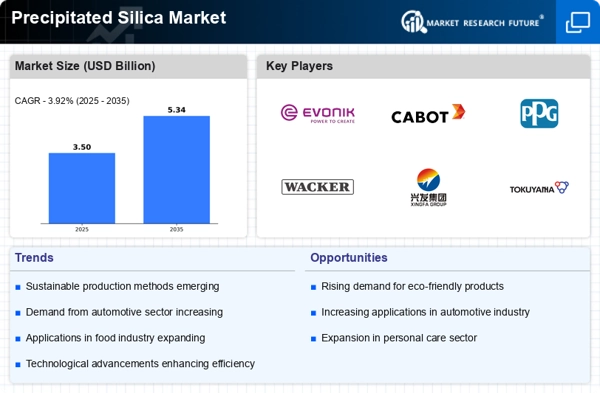

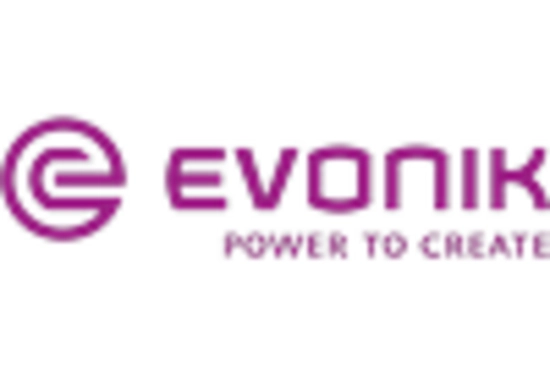
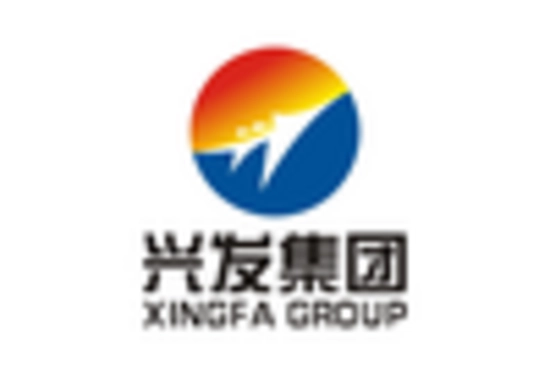
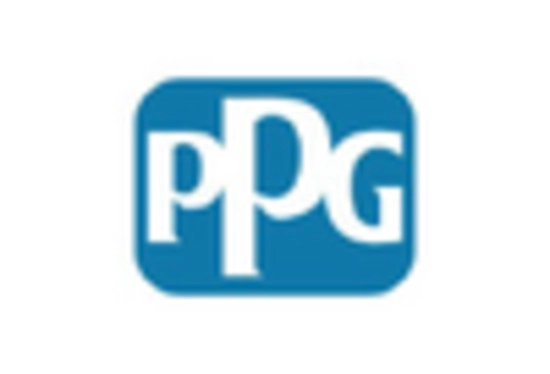
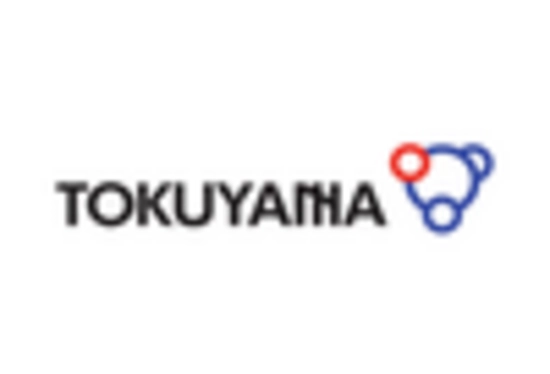
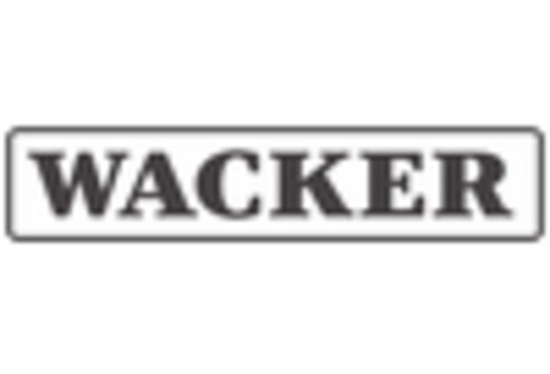

Leave a Comment